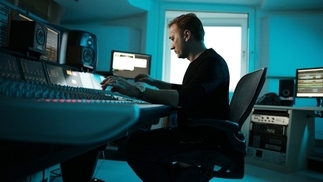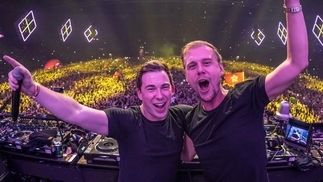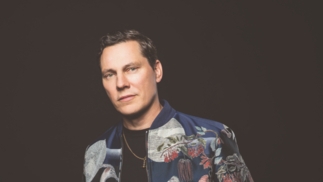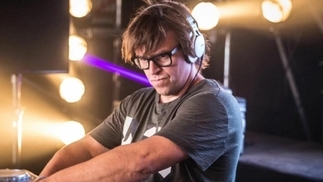TIESTO: NOT LEAVING LAS VEGAS
DJ Mag USA catches up with Tiësto to talk about his new compilation and find out why America is the most exciting place to be right now...
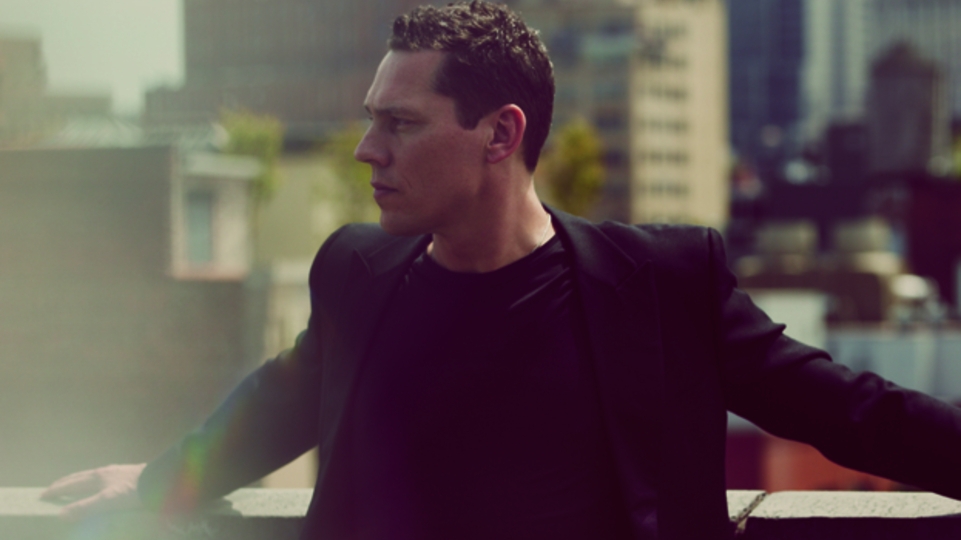
It’s no small decision to abandon a long-running Ibiza residency for new pastures, particularly if it’s a slot that will reliably put you in front of thousands, week after week. The White Isle has seen a number of shake-ups this year, such as Pete Tongdeciding it's time to defect from Pacha, butultimately he'll still be returning to Ibiza.
When DJ Magspeaks to Holland-born Tijs Verwest, better known as Tiësto, however, in the final days of June, just as the Ibiza season is shifting into high gear, tellingly he’s in North America instead. He’s just arrived in Seattle, via the comfort of his private jet, and this year he’s swapping his Ibiza residency for one at a custom-built club in a Las Vegas casino. It’s a good indication of how America is increasingly taking precedence over where he’s focusing his creative energies.
“Everywhere, as usual,” Tiësto replies, with a soft laugh, when asked where he’s arrived from. “It’s a crazy life.” His energy is genuinely affable and friendly, and he seems properly excited about the Stateside developments that are defining his career in 2013.
America’s own summer season is now in full blossom, and Tiësto’s new mix compilation 'Club Life Volume Three: Stockholm' entered the US iTunes dance charts at No.1. “My style has changed quite a bit over the years,” Tiësto admits. “The 'Stockholm' album is where my sound is at. In a sense it’s really going back to the roots of my DJ career, even before I became a trance DJ. I used to play a lot of this kind of style; a lot of vocals, edgy indie-pop dance mixes, combined with some hard underground instrumental tracks.”
The mix is crammed with his own studio concoctions, but he speaks of the influence of the next generation of Dutch and Swedish DJs you’ll hear in his other selections. “The beginning of the mix has more of a Swedish vibe, they’re great at making those really good melodies and vocals. Meanwhile, the Dutch guys are all about the drop with very hard and eclectic sounds... you can hear both sides on the 'Club Life'mix. Alessois there with a very typical Swedish track, and the tracks I did with both Moska and DJ Punish, both of them are very typical Dutch tracks.”
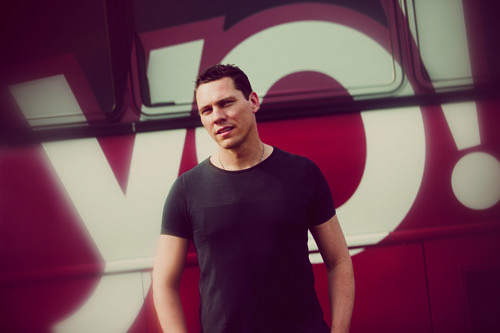
The compilation’s opening track, 'Paradise', serves as a good illustration of where you’ll find Tiësto’s sound in 2013 — fusing the trance melodies of his past with the crossover house and electro sensibilities that have kept him on the main stage over the past few years — and is also a good reflection of his canny eye for picking talent to work with.A collaboration with Dutch young gun Dyro is the latest in a procession of studio partners that also includes Diplo, AN21 & Max Vangeli, Wolfgang Gartner and Showtek.
“It’s good for me to work with the young generation of DJs,” he says. “Because they inspire me and they have a different view on how to produce tracks. So I really just soak it in and learn from them as well. It inspires me, and it helps keep my style fresh as well.”
EVOLVING
Tiësto’s willingness to evolve his sound and keep it in tune with main stage “EDM” has been the key to shifting his career into its higher gear. As early as the late '90s he was endearing himself to trance fans, with his debut album 'In My Memory'and the first entries into the seminal 'In Search of Sunrise'series. His approach brought stadium-filling trance melodies together with a deeper, progressive sensibility that really did resonate with fans. By the time he secured the No.1 spot in the DJ Mag Top 100 DJs pollin 2002, holding it down for three consecutive years, he’d developed into an unstoppable leviathan of the trance scene. Touring his third studio album 'Elements of Life'from 2007, he was selling out stadiums in the US well before the dance boom had taken hold.
However, Tiësto’s 2009 album 'Kaleidoscope'signaled the change that carried him right through to his newly-minted residency at Las Vegas’ Hakkasan nightclub at the MGM Grand Casino. While maintaining his trance roots to a degree, drawing on the fist-pumping melodic aspect in the same fashion as Swedish House Mafia and David Guetta, the album also saw Tiësto openly embracing a crossover sensibility, courting indie-dance and eyeing a spot in the main room house arena. He’s the perfect example of an artist who’s gradually evolved their sound. For the most part he’s taken fans along with him, while at the same time recruiting a whole new generation of followers.
“When you do the same thing for so many years, you feel inspired by the new ideas and you might feel that it’s time for a change,” Tiësto tells DJ Mag. “And during 'Kaleidoscope'and afterwards, I just did it. And it was a tough change because a lot of people focused on how I’d stopped playing and making trance music. Still today, four years later, I get daily tweets from people saying ‘I hope you’ll go back to making trance music again’. So you can never satisfy everyone. You will always lose fans, but luckily for me I also gain a lot of fans too.”
While his shift away from ‘pure’ trance certainly rocked the boat, he’s also gone on record as emphasizing he wouldn’t still be as popular if he hadn’t made the change.
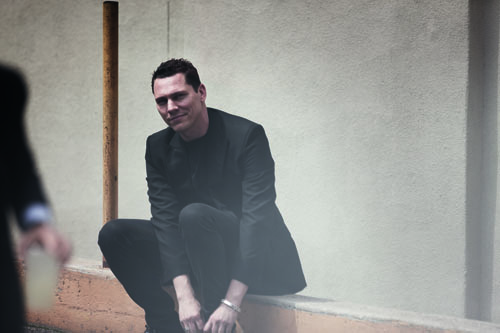
“I stand behind that. If I was still a trance DJ, I’d probably be in the same position some of my colleagues are that I used to be play alongside back in the day. You don’t hear too much about them and people aren’t really excited. They still have their core fans, and will sell out venues and gigs, but it feels to me like they’re not that relevant. It would be the worst for me to have that feeling. I want to feel relevant and on top of things. I want to feel in touch with what’s going on now, with what’s new and what’s fresh. That’s what keeps me excited.
“I used to be just this gigantic trance DJ, very isolated in my own world. Since I made the change, though, people think, ‘Oh, Tiësto has a lot more in him than just that’, which is an achievement I’m really proud of. Everyone from Swedish House Mafia to Afrojack to Hardwell, we all became friends after that. It was nice to see that we fit together so well.”
NEW IBIZA
DJ Mag get hold of Tiësto only a few days after he’s performed at the Las Vegas edition of the Electric Daisy Carnival, an over-the-top spectacle of EDM mania, art installations and otherworldly vibes, rivaling some of the biggest events in Europe. It's quickly come to be considered one of the truly important events in American dance culture.
“It’s 100,000 people every night and the whole fun part was really just watching the spectacle of what happens there,” he says. “I had a really great set there actually, I combined the old and the new a little. I pulled out a few remixed classics and I played my original version of 'Adagio for Strings'. I loved that my new fans embrace my current sound, as well as the old trance. It was a great way for me to really feel and see that I made the right move.”
It certainly wasn’t a small move to make. Tiësto is now based in Las Vegas and recently announced his multi-year deal with Hakkasan. Sin City has indeed become central to his career, as in some respects in 2013 he’s swapped his presence in Europe for one in North America.
“Ibiza has always been a great place for me,” Tiësto reassures, in the same breath confirming he’s hugely excited about the change. “I feel in general, Europe is a little bit behind in dance music. We’ve have seen it all and it’s all been done. When you grow up in this dance culture for 15 years and it’s what your older brother used to listen to... It just feels like people are less excited. In America though, everything is fresh and exciting. Las Vegas has changed a lot even in just the past couple of years. It’s really become like the new Ibiza. People were telling me that three years ago, and I never thought we’d see it. But now with all the new super clubs opening, and with all the superstar DJs playing there every week, it really has made the difference.
